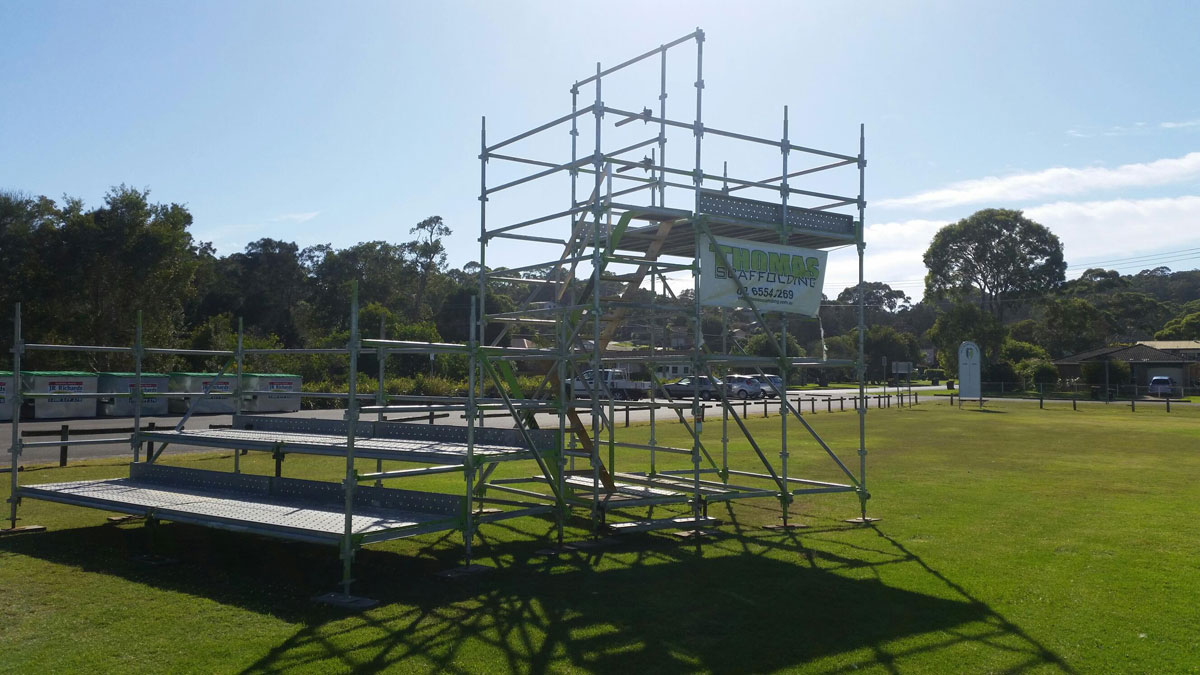In the busy world of construction, among the imposing structures and the buzz of machinery, lies an often-overlooked aspect that is crucial to all project—industrial scaffoldings. These complex structures not only provide critical assistance but also ensure the security and efficiency of construction locations. While many individuals might not give a second glance to the scaffolding that enclose a structure, it plays a key role in delivering high-quality results and ensuring safe job sites. Grasping the nuances of industrial scaffoldings is paramount to recognizing its role in contemporary construction.
As we dive deeper into the complex world of scaffoldings, we will uncover various kinds employed in commercial endeavors, the safety protocols that regulate their application, and the crucial part they play in maintaining compliance with regulations. From tall buildings to remodeling initiatives, scaffoldings is the foundation that supports the building sector. Join us as we explore the overlooked heroes behind these frameworks, emphasizing their effect on task achievement and the well-being of all participants.
Grasping Industrial Scaffold Systems
Industrial scaffold systems is a temporary structure crafted to hold up laborers and supplies during building, remodeling, or upkeep of business buildings. It offers a secure and stable working platform that enables crews to access high areas, carry out tasks efficiently, and ensure the overall soundness of the building location. The value of scaffolding cannot be overstated, as it is integral to upholding the protection and effectiveness of any extensive construction project.
There are multiple categories of scaffold systems used in commercial projects, including tube and clamp scaffolding, organized scaffold systems, and prefabricated scaffolding. Each type has its specific benefits and purposes, based on the particular requirements of the job. For case in point, interchangeable scaffold systems is well-liked for its quick installation and disassembly, making it ideal for tasks with stringent timeframes. Grasping the qualities and roles of each scaffolding type is essential for choosing the most suitable answer for a specific construction area.
Scaffolding not only improves construction site safety but also holds a crucial function in the overall productivity of construction processes. By providing a safe surface for construction personnel, it minimizes the risk of incidents, ensures conformity with protection regulations, and permits improved entry to challenging areas. In conclusion, industrial scaffolding supports the entire building procedure, allowing teams to complete their jobs securely and competently while adhering to field practices and optimal techniques.
Security and Regulation in Scaffolding
Safety and compliance are essential in the world of commercial scaffold systems. Every job demands stringent compliance to standards to ensure the safety of workers and the strength of the scaffold itself. Understanding her latest blog and Health Administration guidelines is crucial for any scaffold operation, as these standards provide a framework for safe practices. Scaffolding must be evaluated regularly, and workers should be educated in recognizing hazards and the correct use of equipment. This adherence not only protects workers but also lessens risk for contractors and clients.

Establishing comprehensive security guidelines begins with choosing the right scaffold system. Each type of scaffold presents unique challenges and safety considerations. For instance, prefabricated scaffold can enhance safety due to its designed flexibility and simplicity of assembly, while traditional pipe and coupling systems may require more instruction to avoid common hazards. A detailed understanding of the tools being used, combined with robust training sessions for the team, greatly lowers the chance of accidents on location.
Moreover, regular security inspections are essential in upholding compliance and ensuring a safe work space. Conducting these inspections should be part of the routine tasks, concentrating on spotting potential hazards such as damaged components or improper setups. By prioritizing safety and regulation, companies not only fulfill legal obligations but also promote a climate of safety that benefits all workers involved in commercial scaffold tasks.
Support Solutions for Particular Undertakings
When it comes to large-scale constructions, various types of support solutions are designed to meet the specific needs of every project. For high-rise buildings, for example, suspended scaffolding systems are frequently used. These systems allow for simple access to higher surfaces and facilitate efficient workflow for construction crews. The adaptability of flexible scaffolding also plays a crucial role in addressing the challenges of different heights and designs, ensuring that the scaffolding remains reliable throughout the project.
In business renovations, expert scaffolding is vital to ensure security and efficiency. Renovation projects may involve complex structural changes, and scaffold design must consider these adjustments without compromising on safety. Detailed planning and execution are necessary to address potential risks associated with old structures while taking into account location accessibility and load requirements. It is critical for scaffolding professionals to collaborate with project managers and construction teams to create a cohesive scaffolding solution crafted specifically for renovation needs.
Scaffolding plays a vital role in public and large venues like arenas, schools, and auditoriums, where crowd safety and construction speed are top priorities. Tailored scaffolding solutions are often designed to fit around existing structures while ensuring minimal disruption to ongoing activities. By effectively managing access points and establishing safety protocols, scaffolding crews can help expedite renovations or construction efforts without interrupting the venue's primary function. This degree of planning demonstrates the importance of having specialized scaffolding solutions that cater to the unique demands of each type of project.
